Chiral Nematic Structure of Cellulose Nanocrystal Suspensions and Films; Polarized Light and Atomic Force Microscopy
Abstract
:1. Introduction
2. Results and Discussion
2.1. Fluid Cellulosic Chiral Nematic Textures
2.1.1. Fluid Phases, Fingerprint Texture
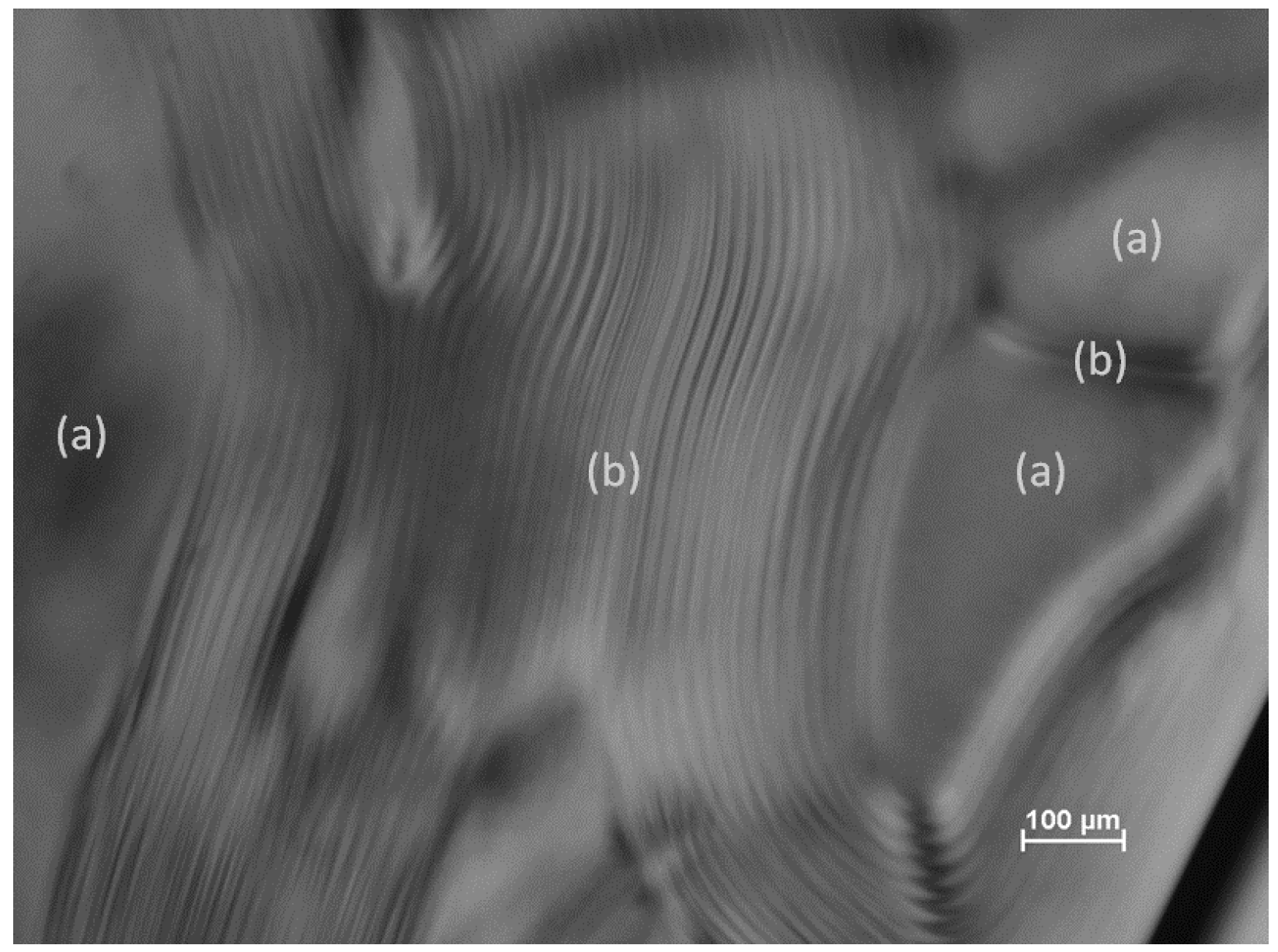

2.1.2. Flow Distortion of Fingerprint Texture
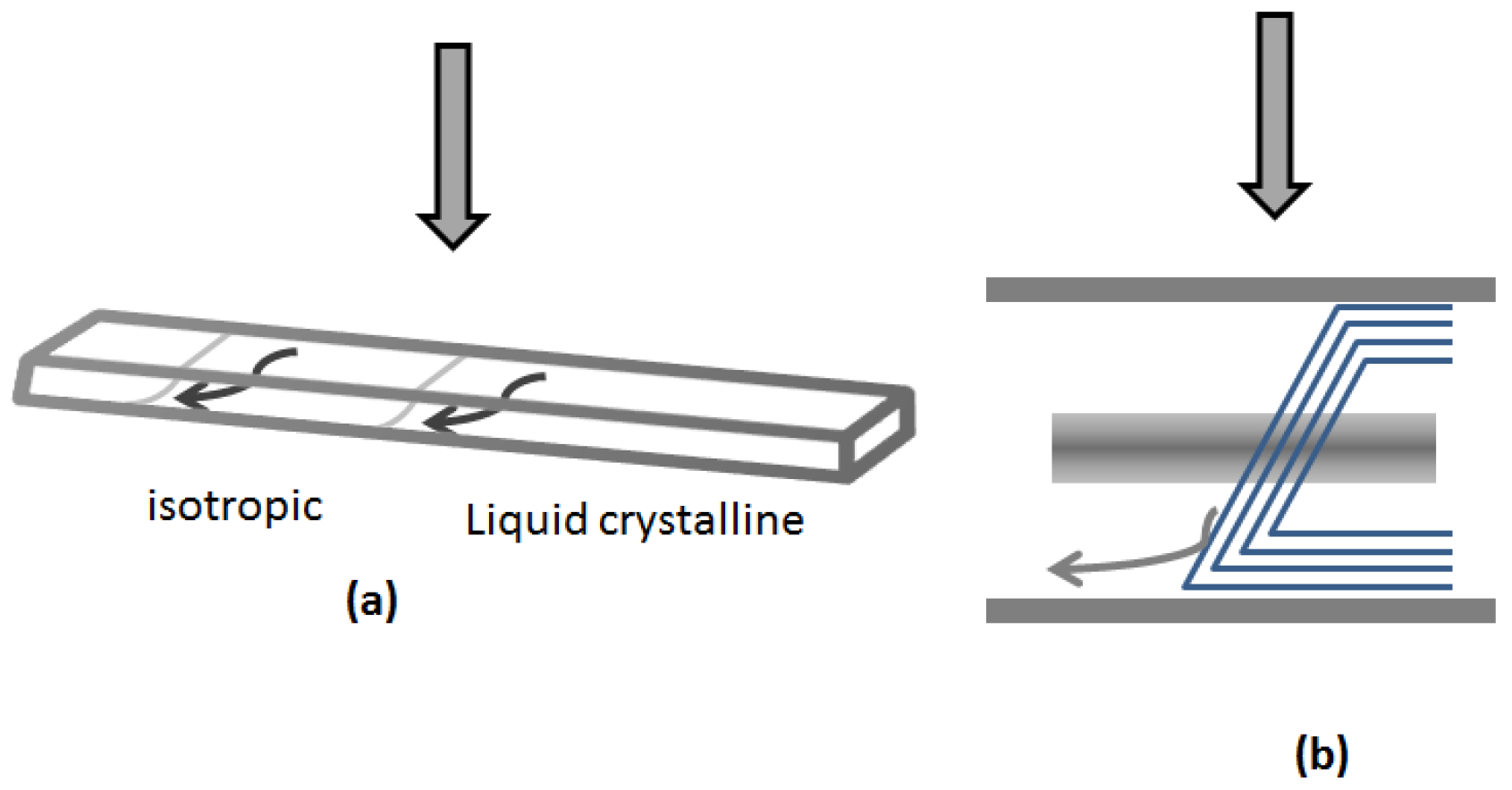
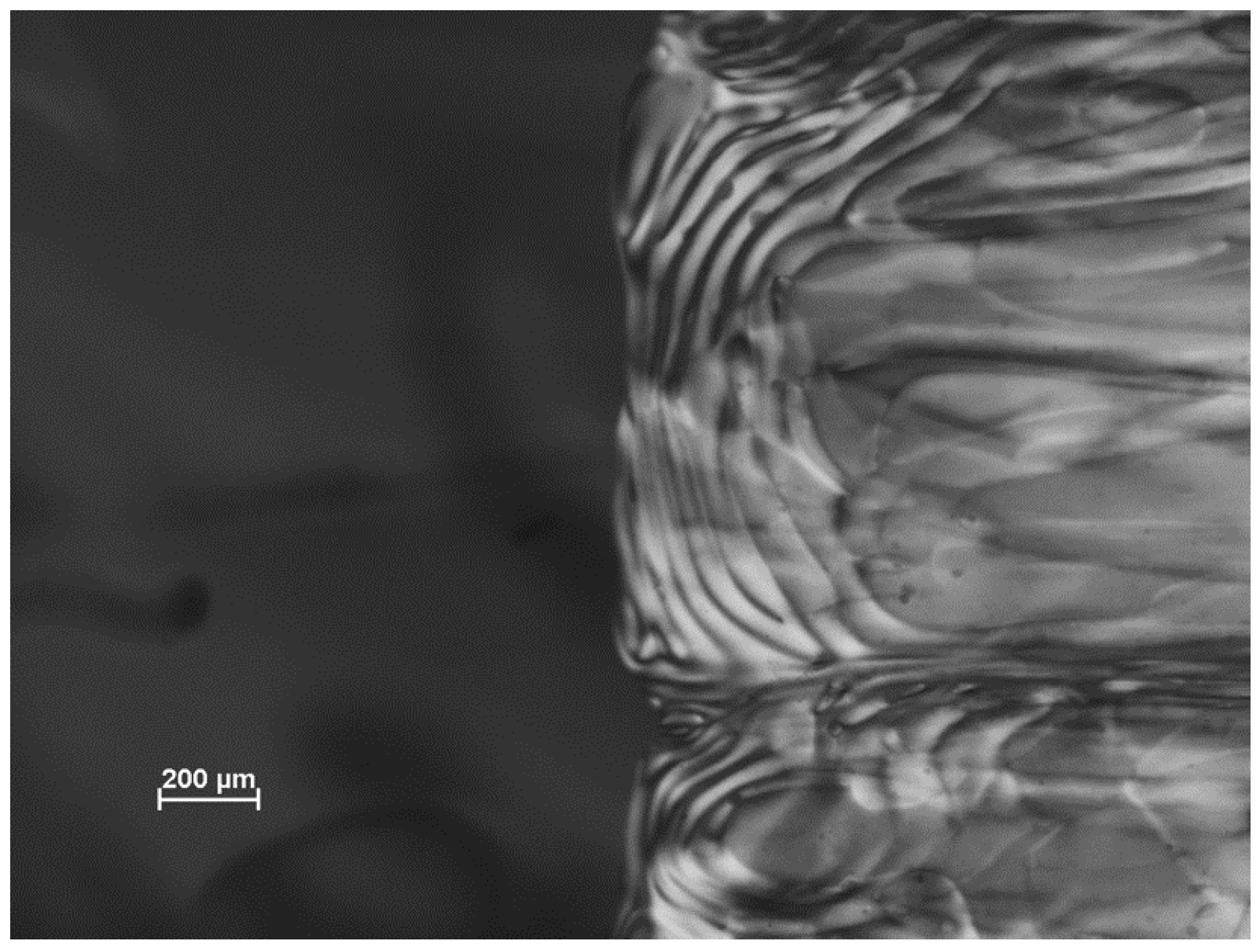
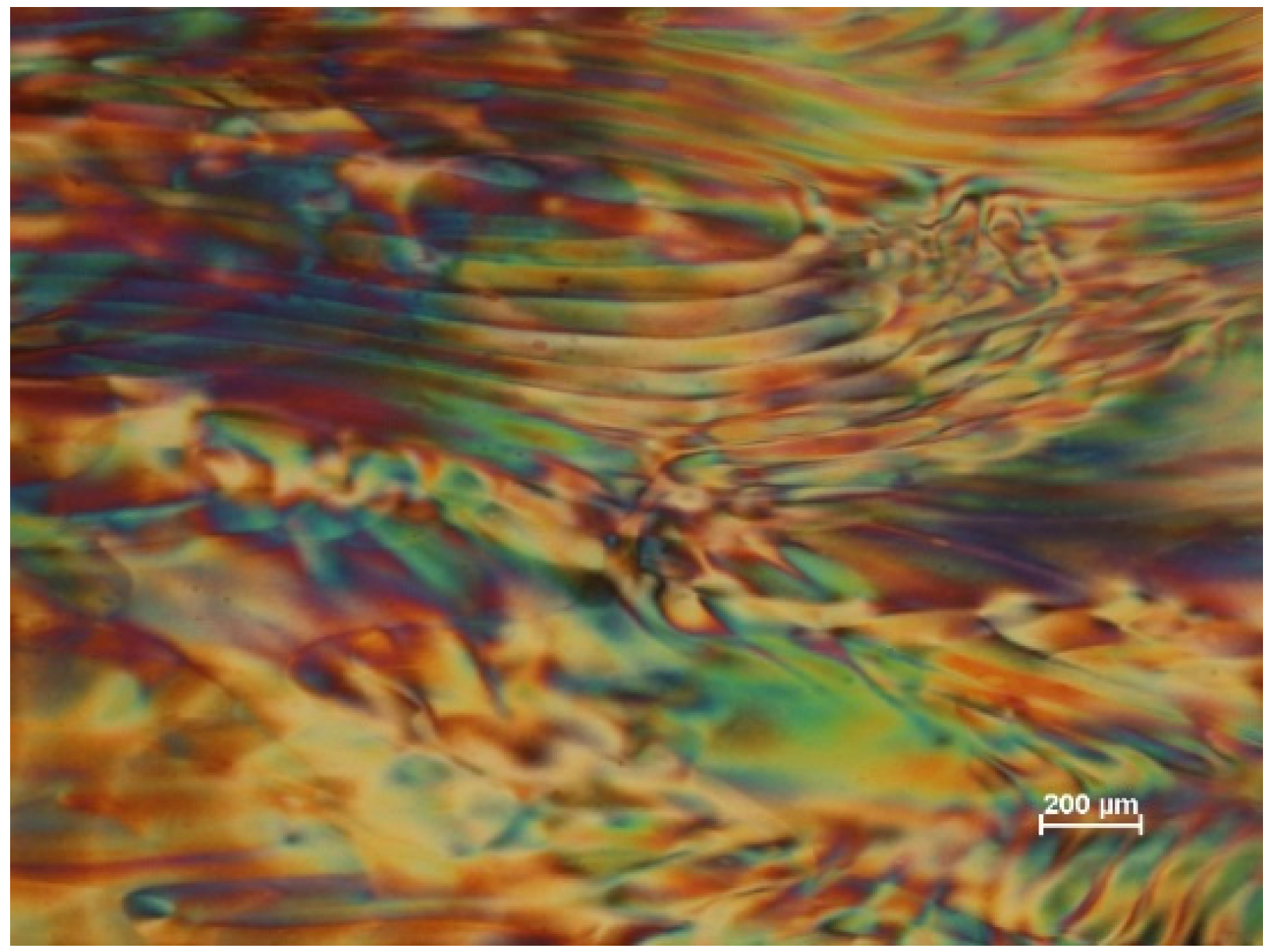
2.1.3. Cellulosic Liquid Crystalline Solutions that Reflect Visible Light
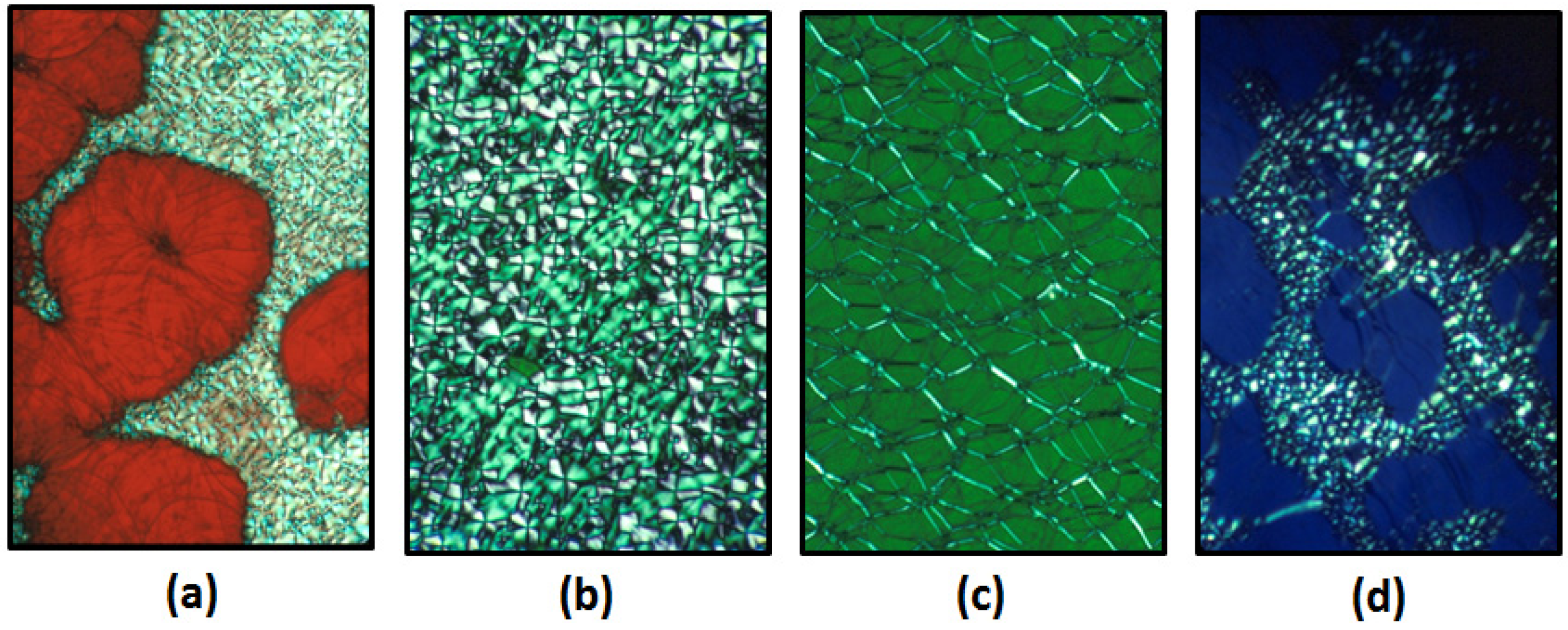
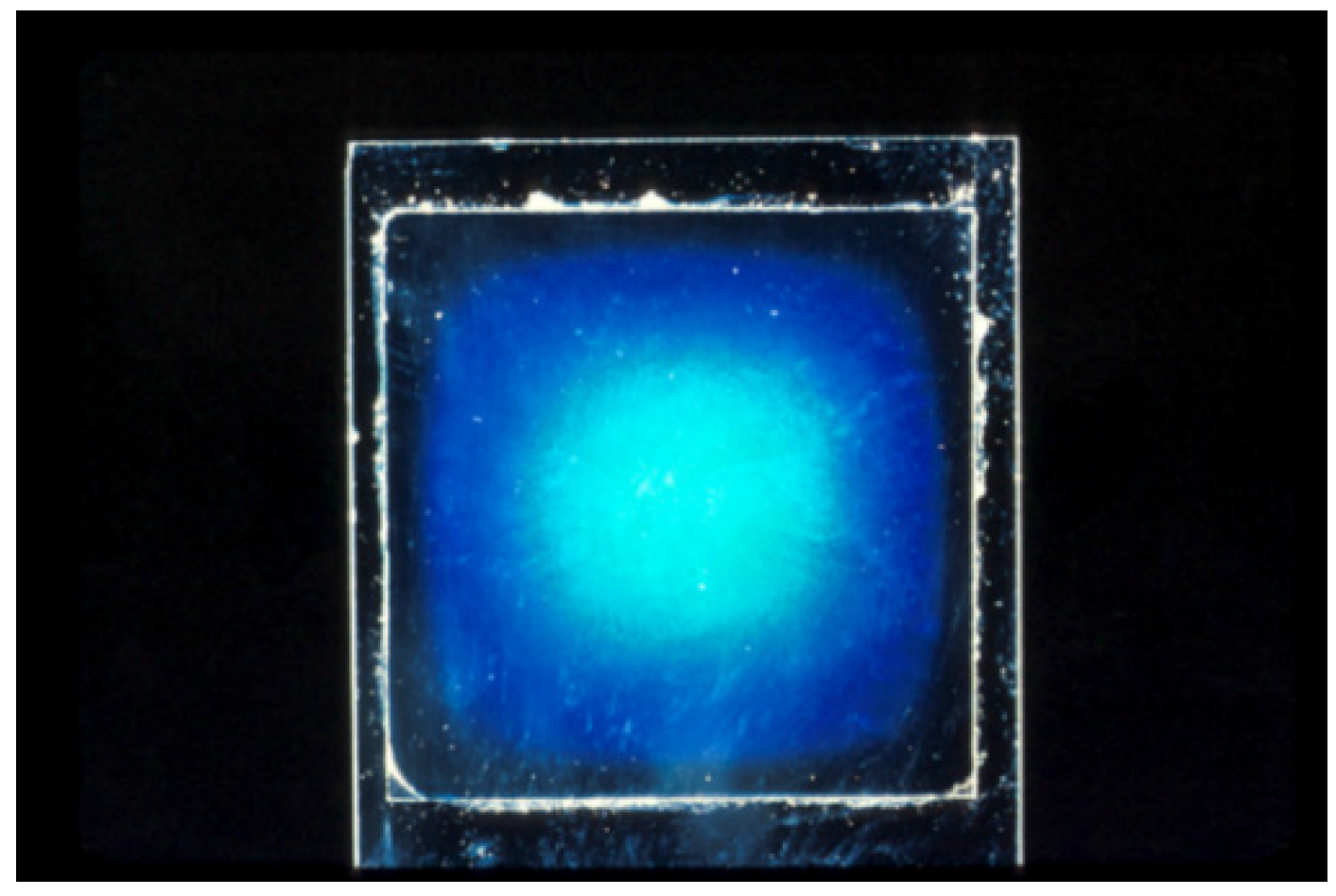
2.2. Solid Cellulosic Films with Chiral Nematic Properties
2.2.1. Evaporation of Water from Edge of Covered Chiral Nematic CNC Suspensions
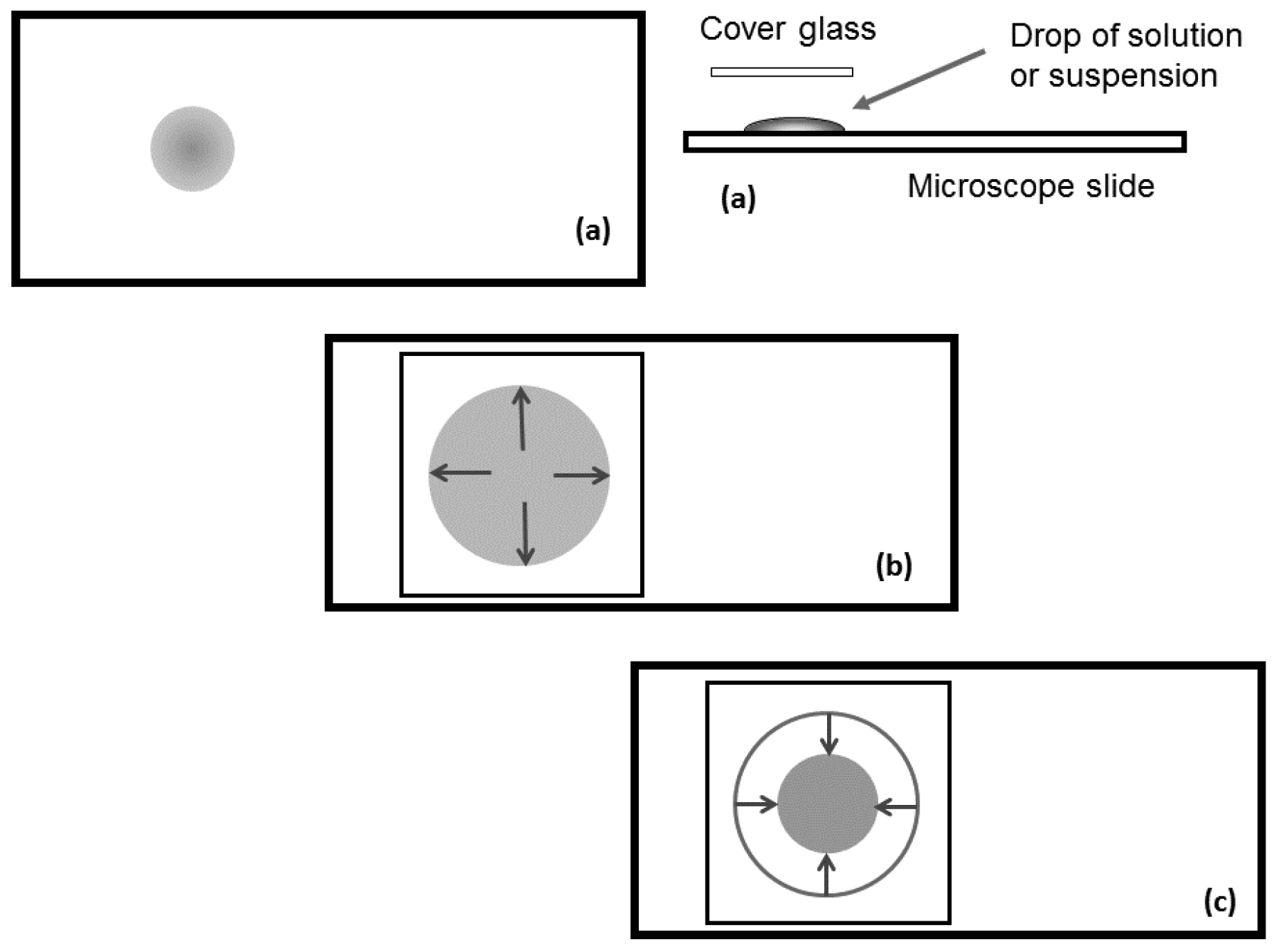
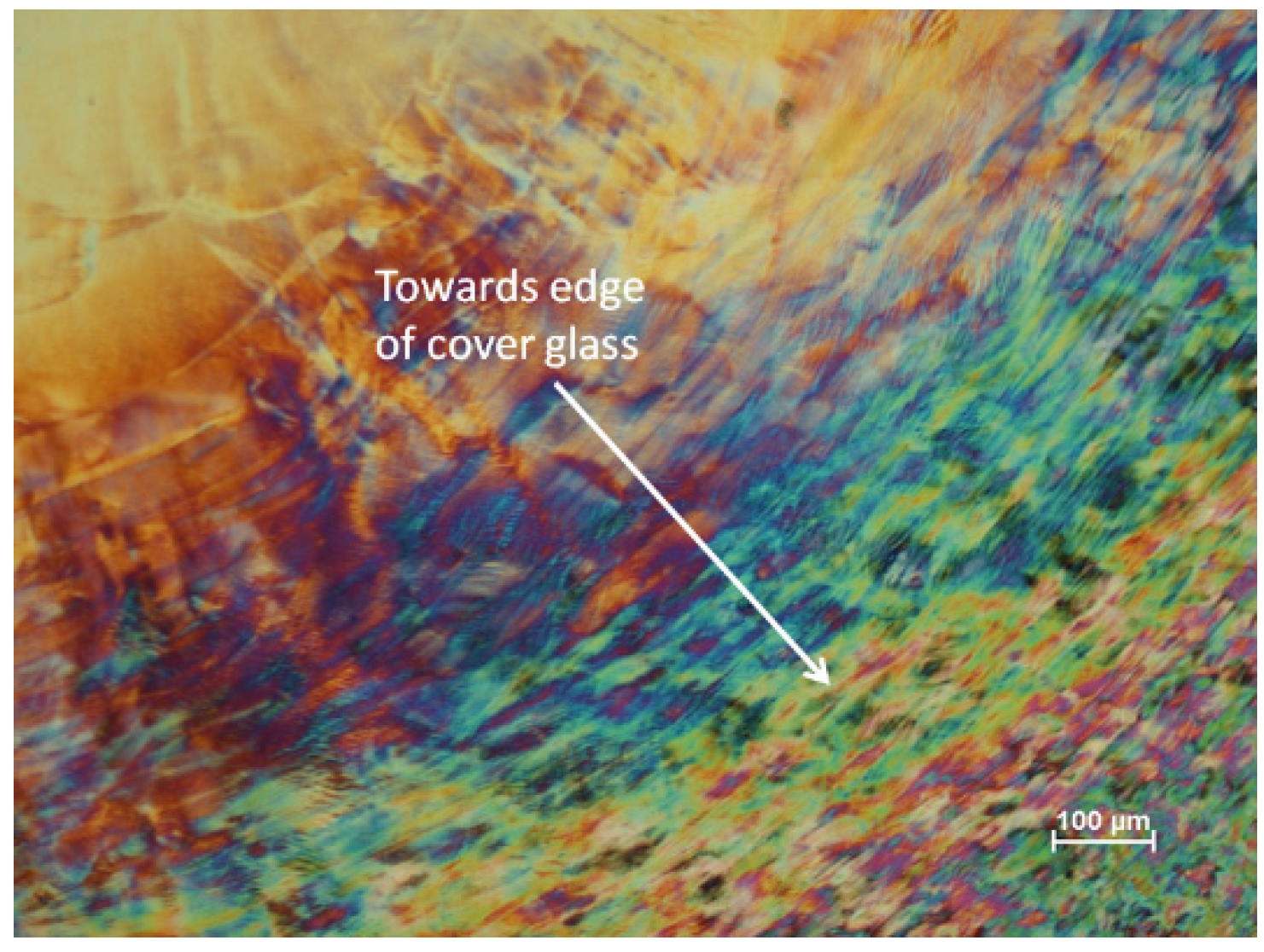
2.2.2. Evaporation of Water from Uncovered Droplets of Chiral Nematic CNC Suspensions
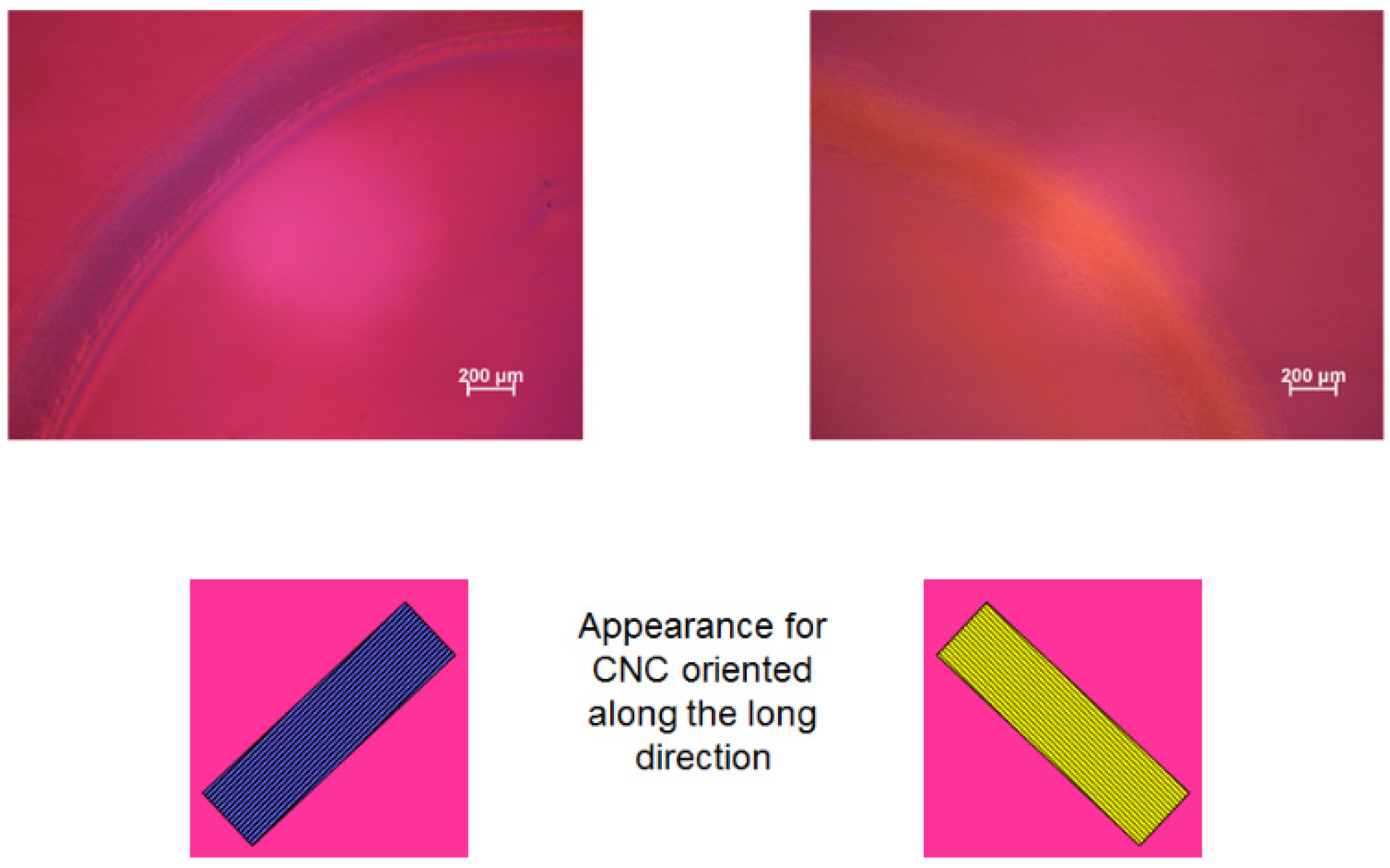

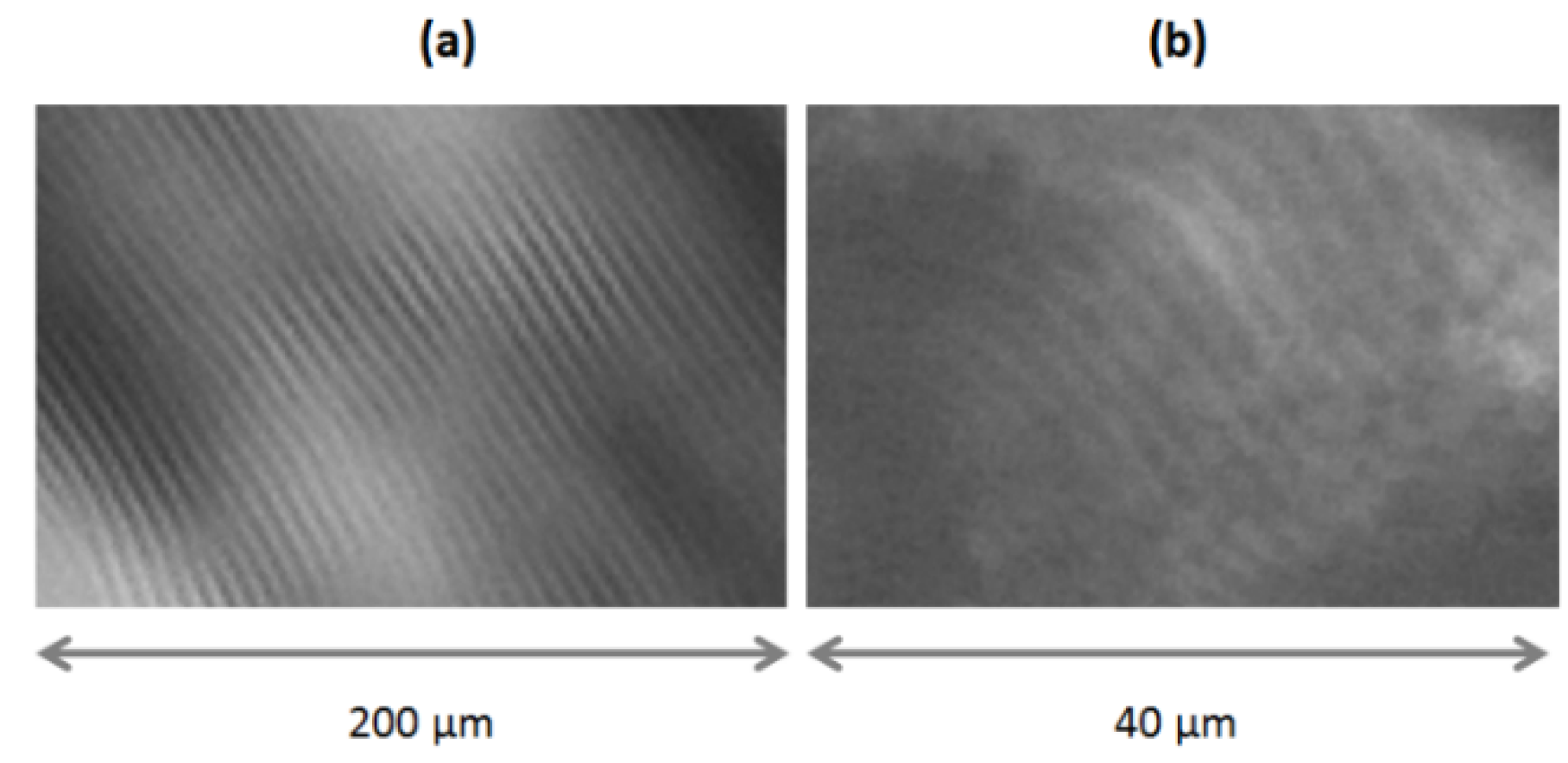
2.2.3. Evaporation of Water from Droplets of Chiral Nematic Suspensions: Stick-Slip Textures
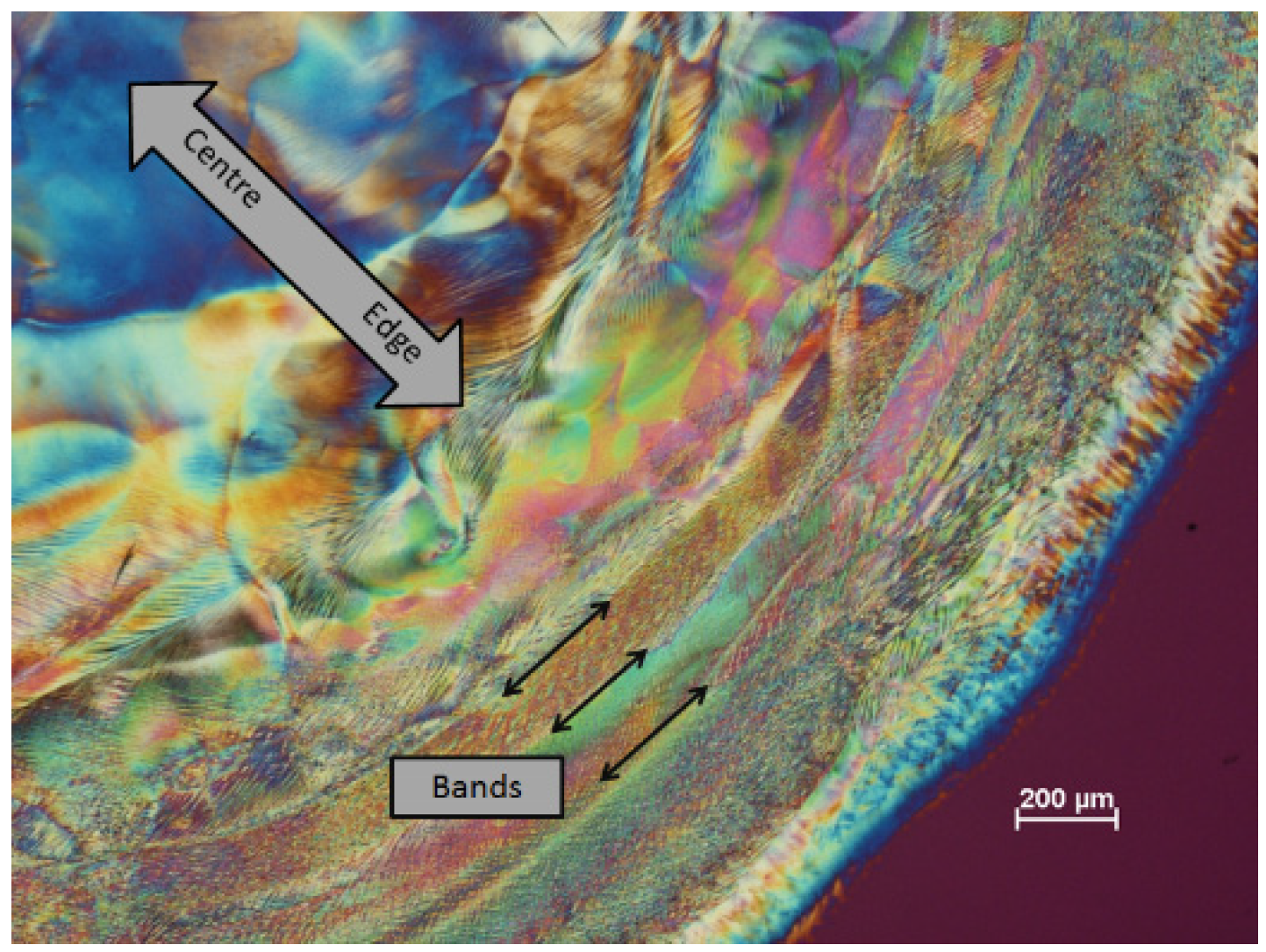

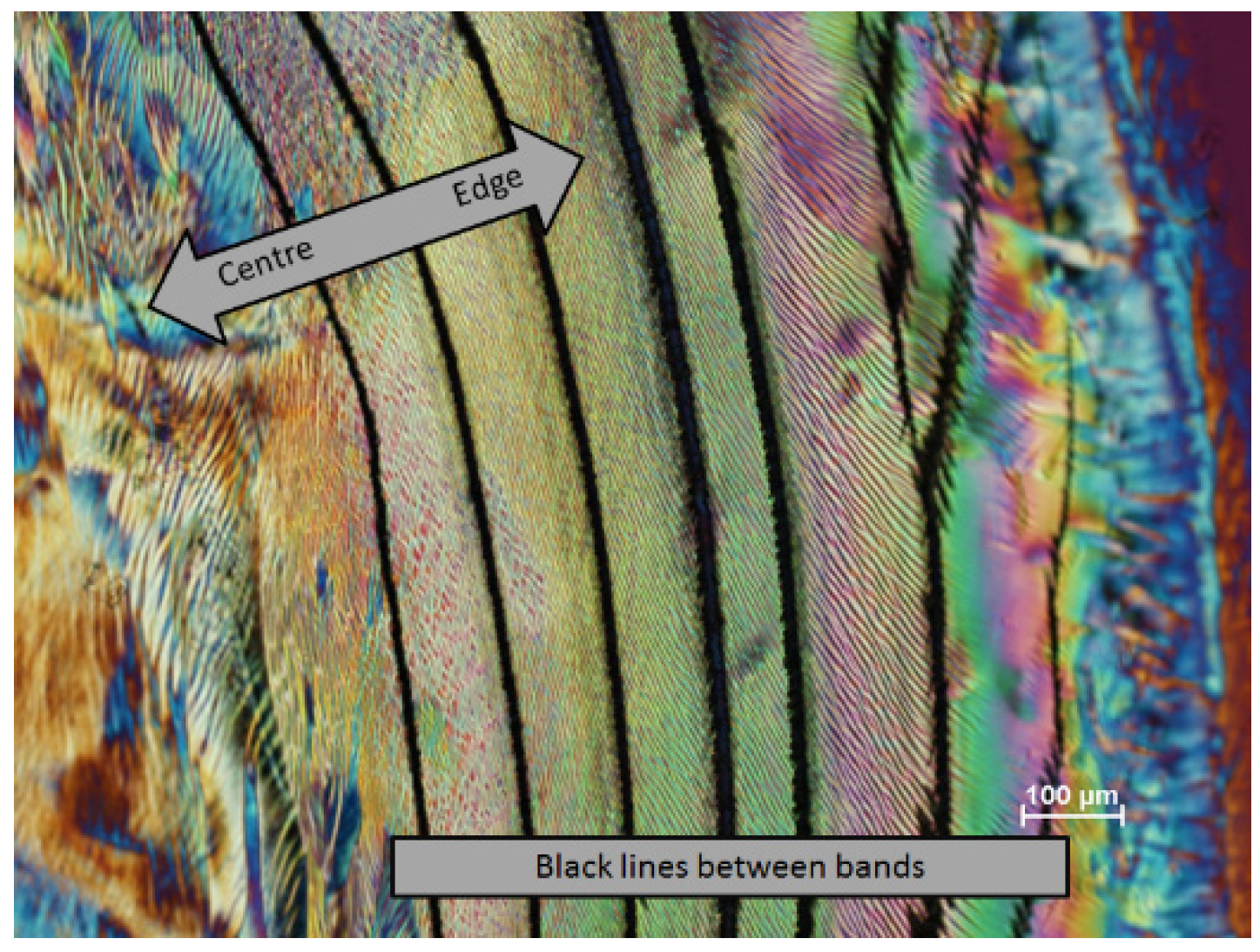
2.2.4. Profilometry of Film Topography
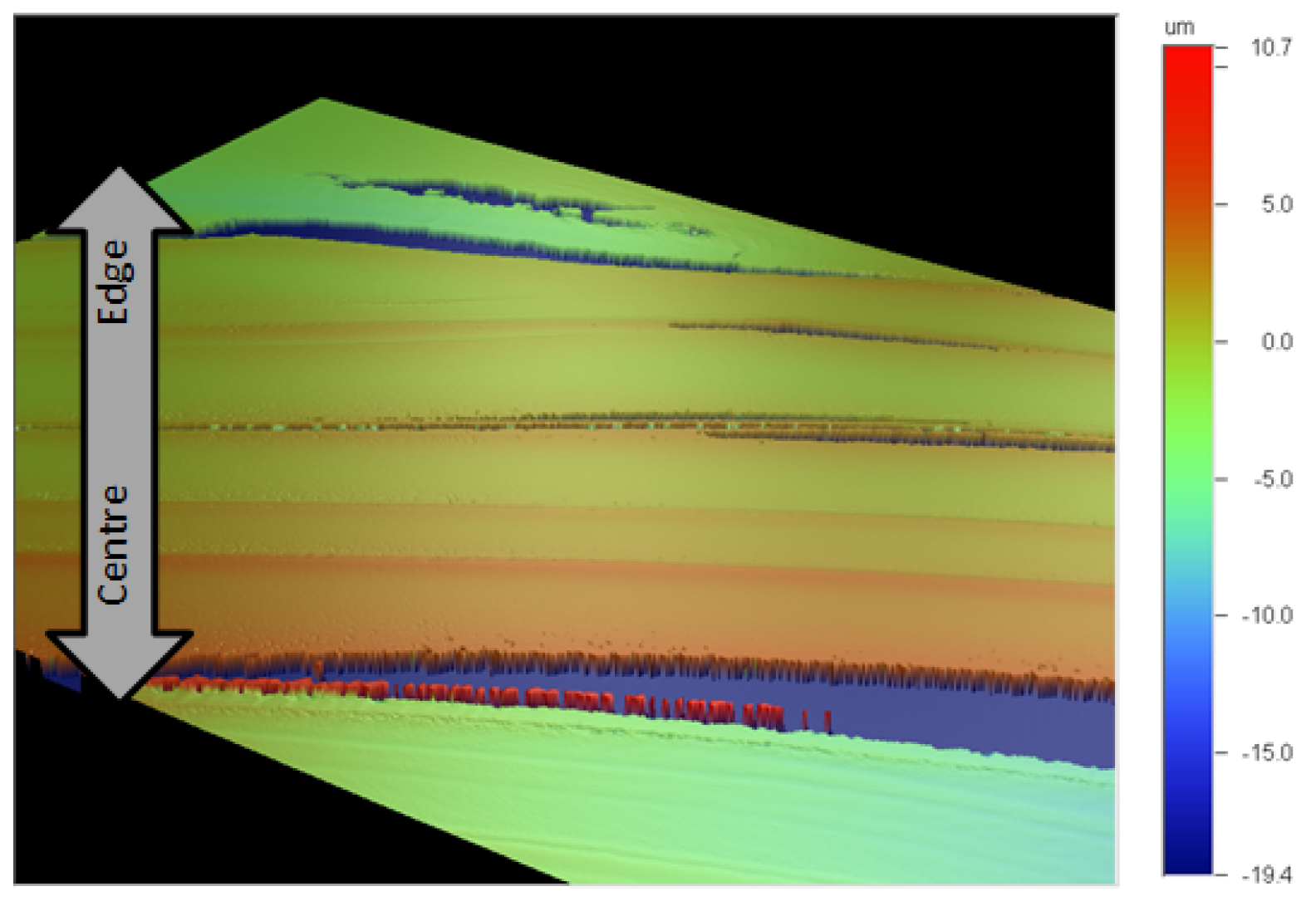
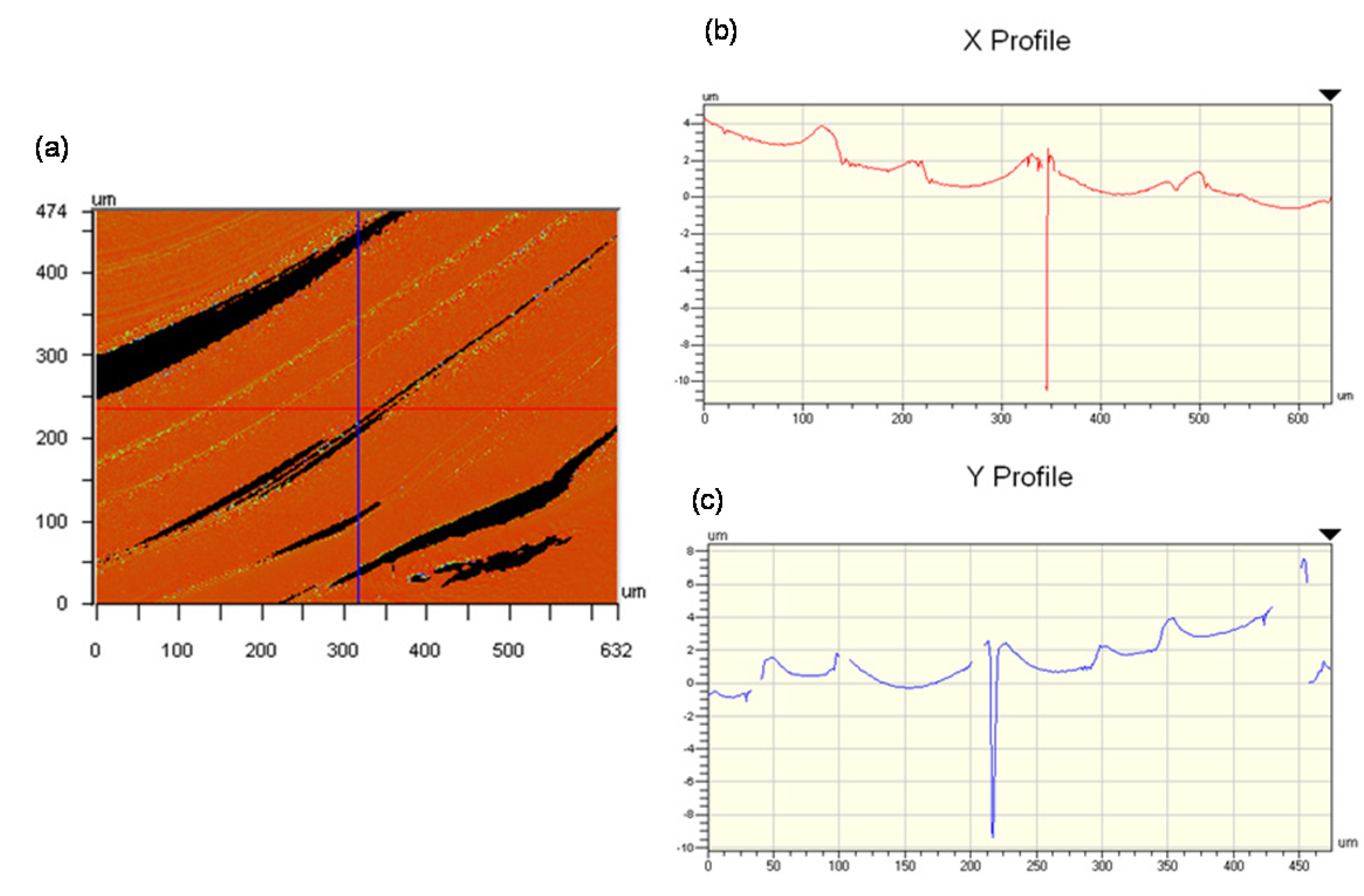
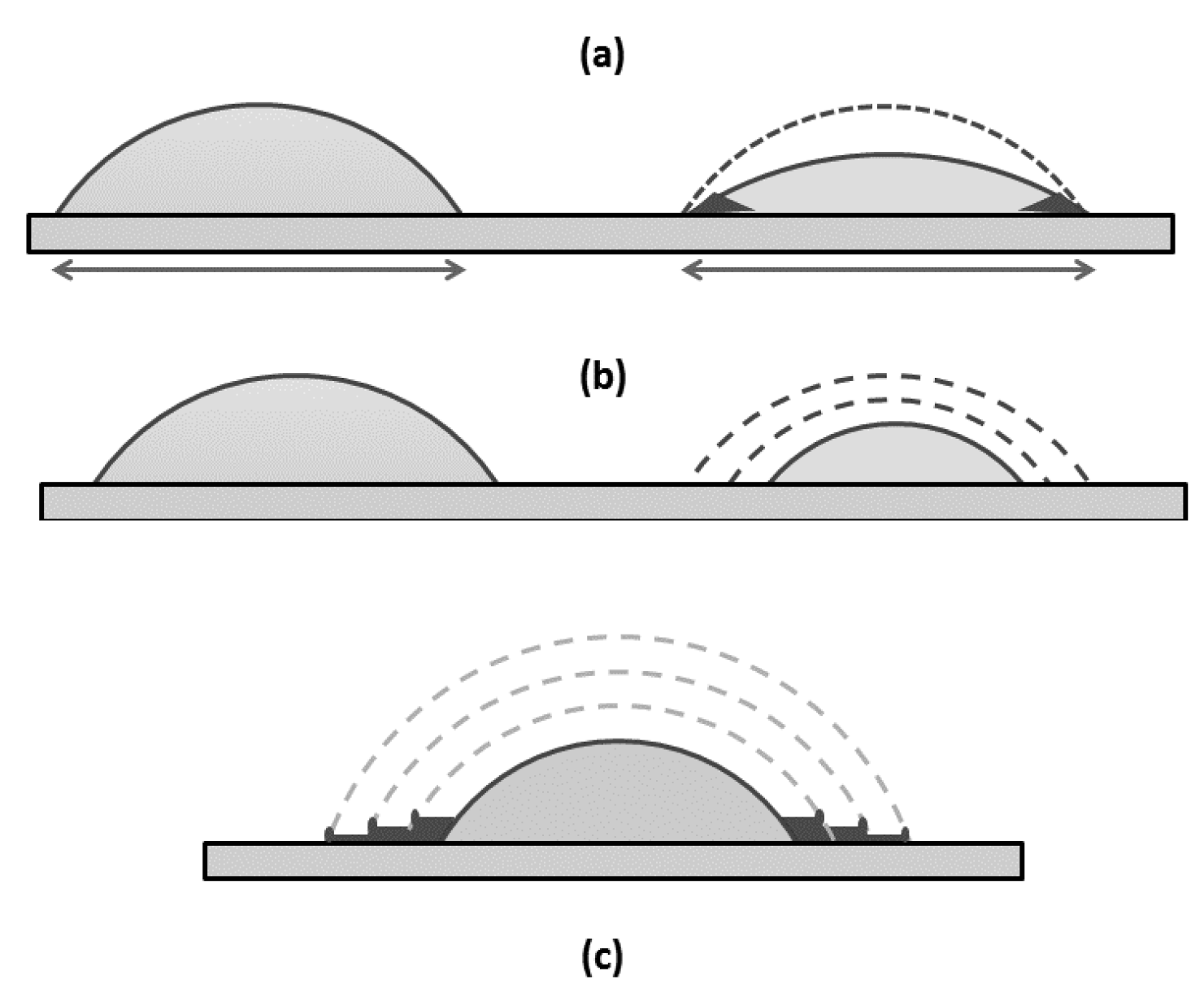
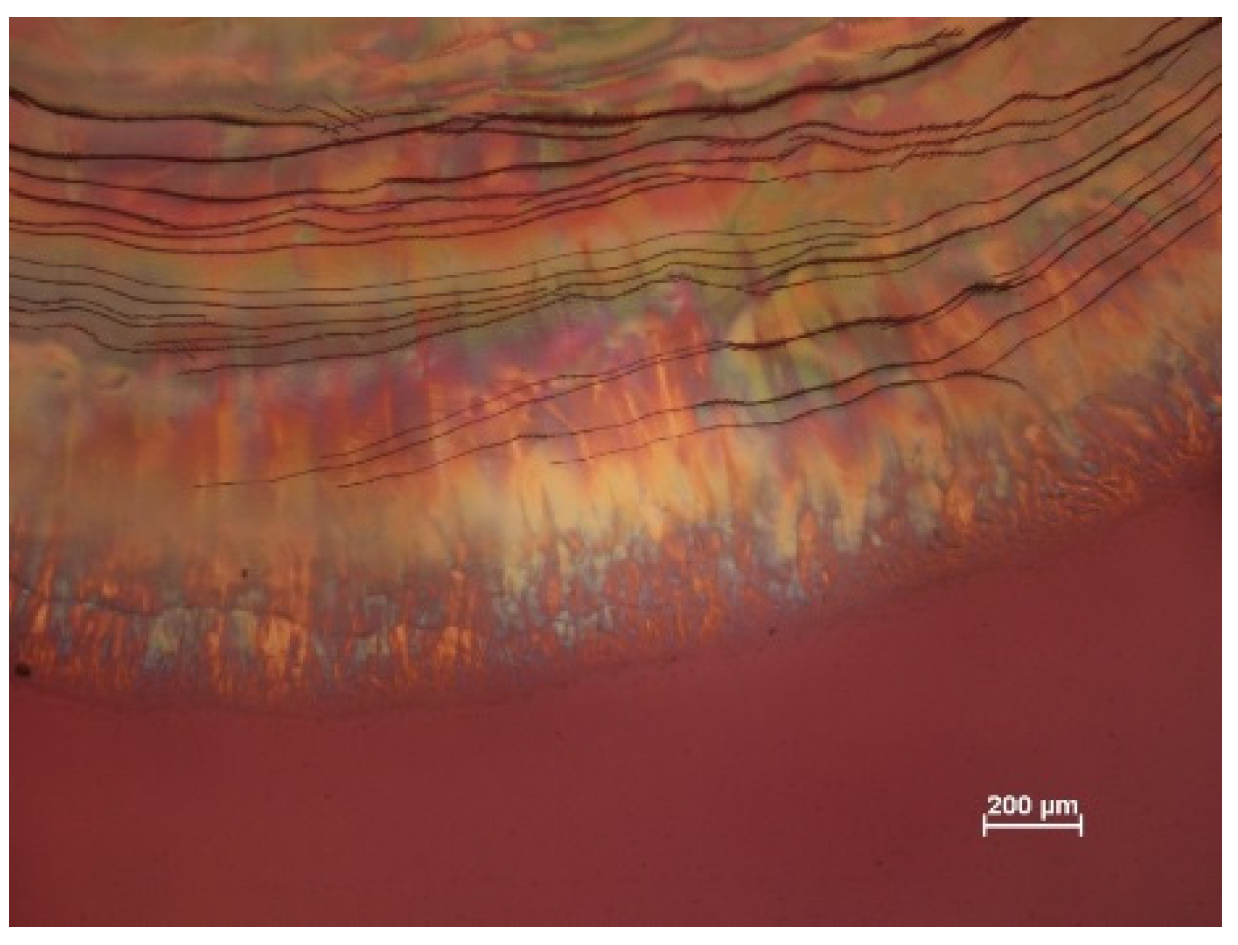
2.3. Atomic Force Microscopy of CNC Orientation and Topography in Dry Films

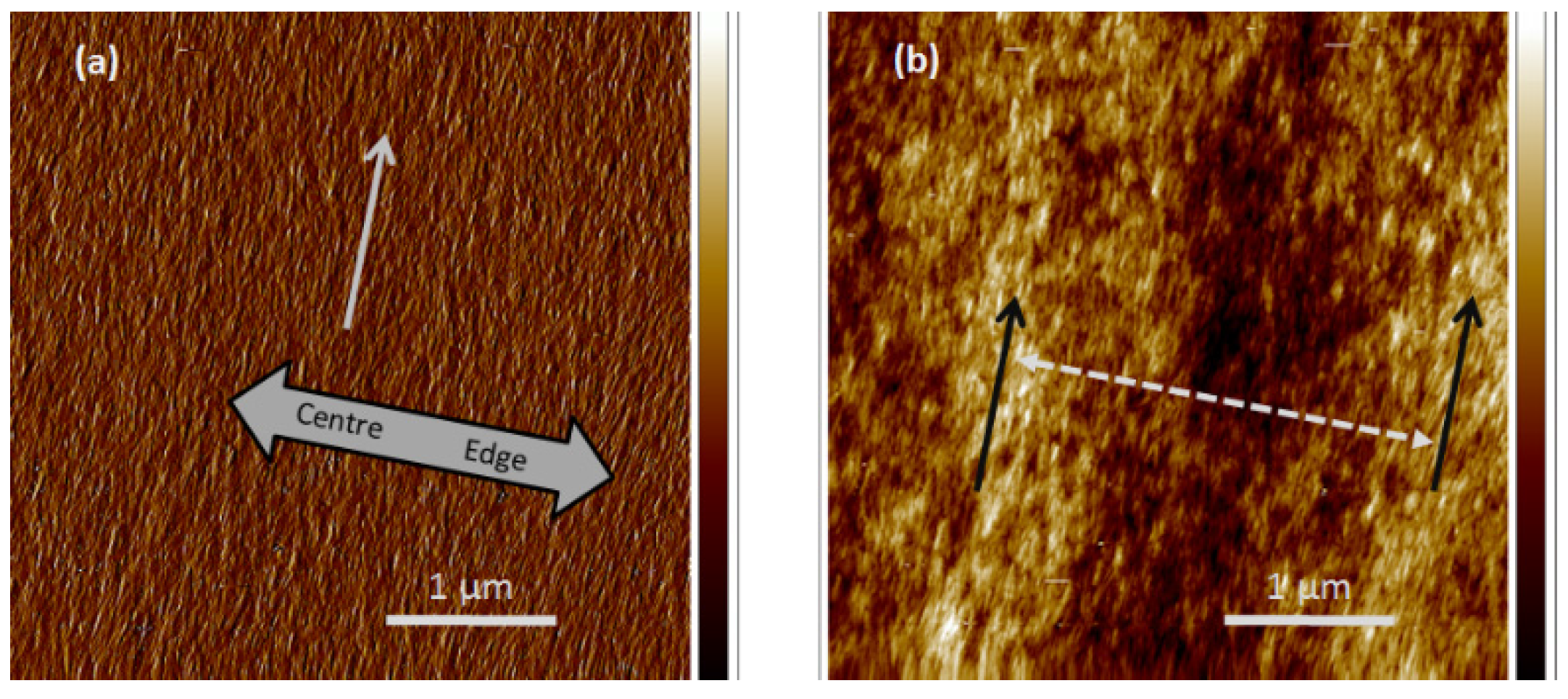
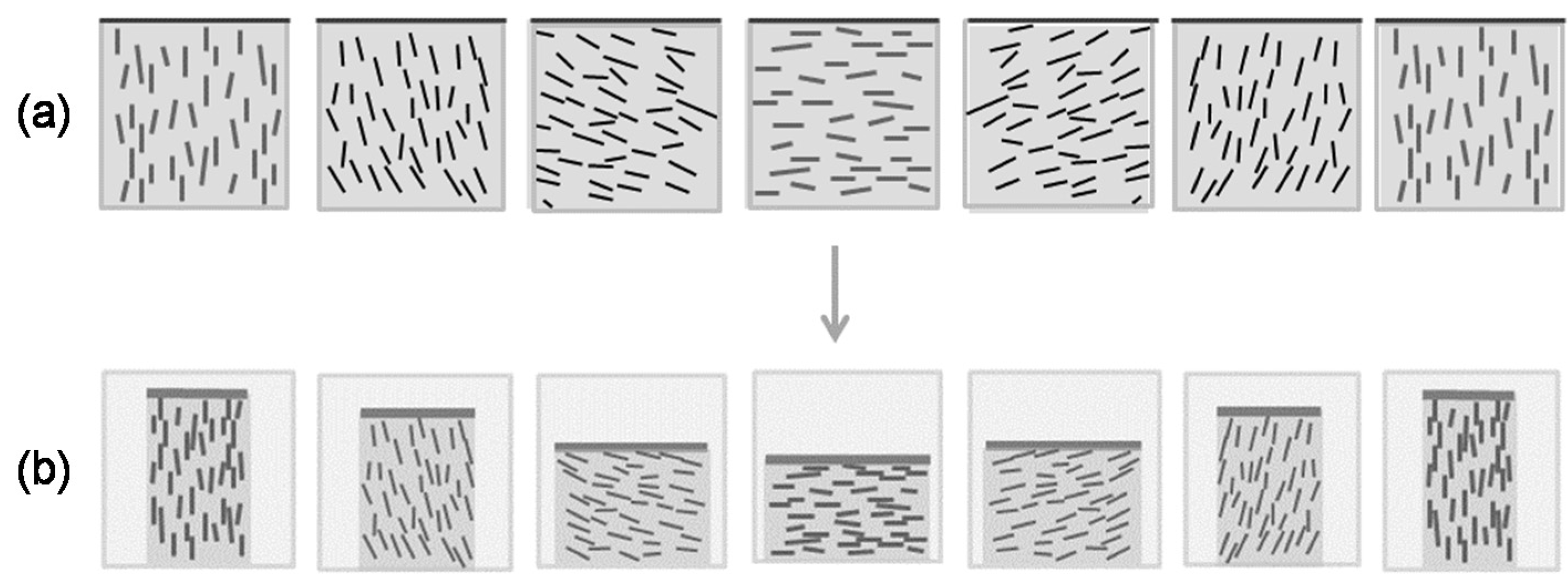
3. Experimental Section
3.1. CNC Preparation and Purification
3.2. Polarized Light Microscopy
3.3. Fabrication of CNC Films
3.4. Optical Profilometry
3.5. Atomic Force Microscopy
4. Conclusions
- Starting with a dilute suspension of CNC, well below the critical concentration for liquid crystal formation, the CNC tend to align radially at the edge of the droplet.
- For more concentrated suspensions that are initially above the critical concentration, some radial initial orientation of CNCs at the edge of the film is observed. This is in line with recent observations of the orientation of CNCs in shear flow, where the acid-form CNCs self-oriented across the flow direction [29].
- Drying droplets of concentrated CNC display a topography governed by evaporation-driven mass transfer (the “coffee-stain effect”).
- The magnitude of the coffee-stain effect is greatest for strongly pinned droplets, where the height near the edge of the dry film is several times the height in the middle of the film [16].
- When pinning of the contact line is weaker, a “stick-slip” situation is observed, with layers of increasing thickness are laid down by the receding contact line. The layers give a complex optical texture; radial cracking of the drying film was sometimes observed.
- The surface topography of dry films at short length scales showed a radial orientation of the CNC at the free surface of the film, along with a radial height variation with a period of approximately P/2, ascribed to the anisotropic shrinkage of the chiral nematic structure.
- The rich liquid crystalline textures displayed by the evaporation of water from CNC suspensions depend on the interplay of concentration gradients that influence chiral nematic pitch, director orientation and gelation with the effects of surface orientation and the elastic constants normally associated with liquid crystalline phases. The qualitative results here are very preliminary, but hopefully indicate some of the variables involved in the formation of chiral nematic solids from cellulose nanocrystal suspensions.
Acknowledgments
Author Contributions
Conflicts of Interest
References
- Werbowyj, R.S.; Gray, D.G. Liquid crystalline structure in aqueous hydroxypropyl cellulose solutions. Mol. Cryst. Liq. Cryst. Lett. 1976, 34, 97–103. [Google Scholar] [CrossRef]
- Nishio, Y.; Sato, J.; Sugimura, K. Liquid crystals of cellulosics: Fascinating ordered structures for the design of functional material systems. Adv. Polym. Sci. 2015. [Google Scholar] [CrossRef]
- Revol, J.F.; Bradford, H.; Giasson, J.; Marchessault, R.H.; Gray, D.G. Helicoidal self-ordering of cellulose microfibrils in aqueous suspension. Int. J. Biol. Macromol. 1992, 14, 170–172. [Google Scholar] [CrossRef]
- Lagerwall, J.P.F.; Schütz, C.; Salajkova, M.; Noh, J.H.; Park, J.H.; Scalia, G.; Bergström, L. Cellulose nanocrystal-based materials: From Liquid Crystal Self-Assembly and Glass Formation to Multifunctional Thin Films. Available online: http://www.nature.com/am/journal/v6/n1/abs/am201369a.html (accessed on 10 January 2014).
- Habibi, Y.; Lucia, L.A.; Rojas, O.J. Cellulose nanocrystals: Chemistry, self-assembly and applications. Chem. Rev. 2010, 110, 3479–3500. [Google Scholar] [CrossRef] [PubMed]
- Klemm, D.; Kramer, F.; Moritz, S.; Lindström, T.; Ankerfors, M.; Gray, D.; Dorris, A. Nanocelluloses: A new family of nature-based materials. Angew. Chem. Int. Ed. 2011, 50, 5438–5466. [Google Scholar] [CrossRef] [PubMed]
- Moon, R.J.; Martini, A.; Nairn, J.; Simonsen, J.; Youngblood, J. Cellulose nanomaterials review: Structure, properties and nanocomposites. Chem. Soc. Rev. 2011, 40, 3941–3994. [Google Scholar] [CrossRef] [PubMed]
- Chandrasekhar, S. Liquid Crystals, 2nd ed.; Cambridge University Press: Cambridge, UK, 1992; pp. 213–299. [Google Scholar]
- Revol, J.F.; Godbout, L.; Dong, X.M.; Gray, D.G.; Chanzy, H.; Maret, G. Chiral nematic suspensions of cellulose crystallites; phase separation and magnetic field orientation. Liq. Cryst. 1994, 16, 127–134. [Google Scholar] [CrossRef]
- Dong, X.M.; Kimura, T.; Revol, J.F.; Gray, D.G. Effects of ionic strength on the phase separation of suspensions of cellulose crystallites. Langmuir 1996, 12, 2076–2082. [Google Scholar] [CrossRef]
- Chen, W.; Gray, D.G. Interfacial tension between isotropic and anisotropic phases of a suspension of rod-like particles. Langmuir 2002, 18, 633–637. [Google Scholar] [CrossRef]
- Mu, X.; Gray, D.G. Formation of chiral nematic films from cellulose nanocrystal suspensions is a two-stage process. Langmuir 2014, 30, 9256–9260. [Google Scholar] [CrossRef] [PubMed]
- Hoeger, I.; Rojas, O.J.; Efimenko, K.; Velev, O.D.; Kelley, S.S. Ultrathin film coatings of aligned cellulose nanocrystals from a convective-shear assembly system and their surface mechanical properties. Soft Matter 2011, 7, 1957–1967. [Google Scholar] [CrossRef]
- Uetani, K.; Yano, H. Self-organizing capacity of nanocelluloses via droplet evaporation. Soft Matter 2013, 9, 3396–3401. [Google Scholar] [CrossRef]
- Introduction to Polarized Light Microscopy. Available online: https://www.microscopyu.com/articles/polarized/polarizedintro.html (accessed on 2 November 2015).
- Mu, X.; Gray, D.G. Droplets of cellulose nanocrystal suspensions on drying give iridescent 3-D “coffee-stain” rings. Cellulose 2015, 22, 1103–1107. [Google Scholar] [CrossRef]
- Revol, J.-F.; Godbout, L.; Gray, D.G. Solid films of cellulose with chiral nematic order and optically variable properties. J. Pulp Paper Sci. 1998, 24, 146–149. [Google Scholar]
- Beck, S.; Bouchard, J.; Berry, R. Controlling the reflection wavelength of iridescent solid films of nanocrystalline cellulose. Biomacromolecules 2011, 12, 167–172. [Google Scholar] [CrossRef] [PubMed]
- Beck, S.; Bouchard, J.; Chauve, G.; Berry, R. Controlled production of patterns in iridescent solid films. Cellulose 2013, 20, 1401–1411. [Google Scholar] [CrossRef]
- Tang, H.; Guo, B.; Jiang, H.; Xue, L.; Li, B.; Cao, X.; Zhang, Q.; Li, P. Fabrication and characterization of nanocrystalline cellulose films prepared under vacuum conditions. Cellulose 2013, 20, 2667–2674. [Google Scholar] [CrossRef]
- Dumanli, A.G.; van der Kooij, H.M.; Kamita, G.; Reisner, E.; Baumberg, J.J.; Steiner, U.; Vignolini, S. Digital color in cellulose nanocrystal films. ACS Appl. Mater. Interfaces 2014, 6, 12302–12306. [Google Scholar] [CrossRef] [PubMed]
- Dumanli, A.G.; Kamita, G.; Landman, J.; van der Kooij, H.M.; Glover, B.J.; Baumberg, J.J.; Steiner, U.; Vignolini, S. Controlled, bio-inspired self-assembly of cellulose-based chiral reflectors. Adv. Opt. Mater. 2014, 2, 646–650. [Google Scholar] [CrossRef] [PubMed]
- Cira, N.J.; Benusiglio, A.; Prakash, M. Vapour-mediated sensing and motility in two-component droplets. Nature 2015, 519, 446–450. [Google Scholar] [CrossRef] [PubMed]
- Meister, R.; Dumoulin, H.; Halle, M.A.; Pieranski, P. The anchoring of a cholesteric liquid crystal at the free surface. J. Phys. II 1996, 6, 827–844. [Google Scholar] [CrossRef]
- Roman, M.; Gray, D.G. Parabolic focal conics in self-assembled solid films of cellulose nanocrystals. Langmuir 2005, 21, 5555–5561. [Google Scholar] [CrossRef] [PubMed]
- Page, D.H.; Tydeman, P.A. Consolidation of the Paper Web; Bolam, F.M., Ed.; British Paper and Board Makers Association: London, UK, 1965; pp. 371–396. [Google Scholar]
- Rofouie, P.; Pasini, D.; Rey, A.D. Nano-scale surface wrinkling in chiral liquid crystals and plant-based plywoods. Soft Matter 2015, 11, 1127–1139. [Google Scholar] [CrossRef] [PubMed]
- Kloser, E.; Gray, D.G. Surface PEG-grafting of cellulose nanocrystals in aqueous media. Langmuir 2010, 26, 13450–13456. [Google Scholar] [CrossRef] [PubMed]
- Tatsumi, M.; Teramoto, Y.; Nishio, Y. Different orientation patterns of cellulose nanocrystal films prepared from aqueous suspensions by shearing under evaporation. Cellulose 2015, 22, 2983–2992. [Google Scholar] [CrossRef]
© 2015 by the authors; licensee MDPI, Basel, Switzerland. This article is an open access article distributed under the terms and conditions of the Creative Commons by Attribution (CC-BY) license (http://creativecommons.org/licenses/by/4.0/).
Share and Cite
Gray, D.G.; Mu, X. Chiral Nematic Structure of Cellulose Nanocrystal Suspensions and Films; Polarized Light and Atomic Force Microscopy. Materials 2015, 8, 7873-7888. https://doi.org/10.3390/ma8115427
Gray DG, Mu X. Chiral Nematic Structure of Cellulose Nanocrystal Suspensions and Films; Polarized Light and Atomic Force Microscopy. Materials. 2015; 8(11):7873-7888. https://doi.org/10.3390/ma8115427
Chicago/Turabian StyleGray, Derek G., and Xiaoyue Mu. 2015. "Chiral Nematic Structure of Cellulose Nanocrystal Suspensions and Films; Polarized Light and Atomic Force Microscopy" Materials 8, no. 11: 7873-7888. https://doi.org/10.3390/ma8115427





